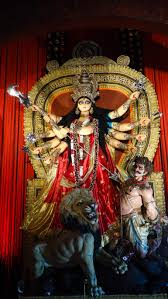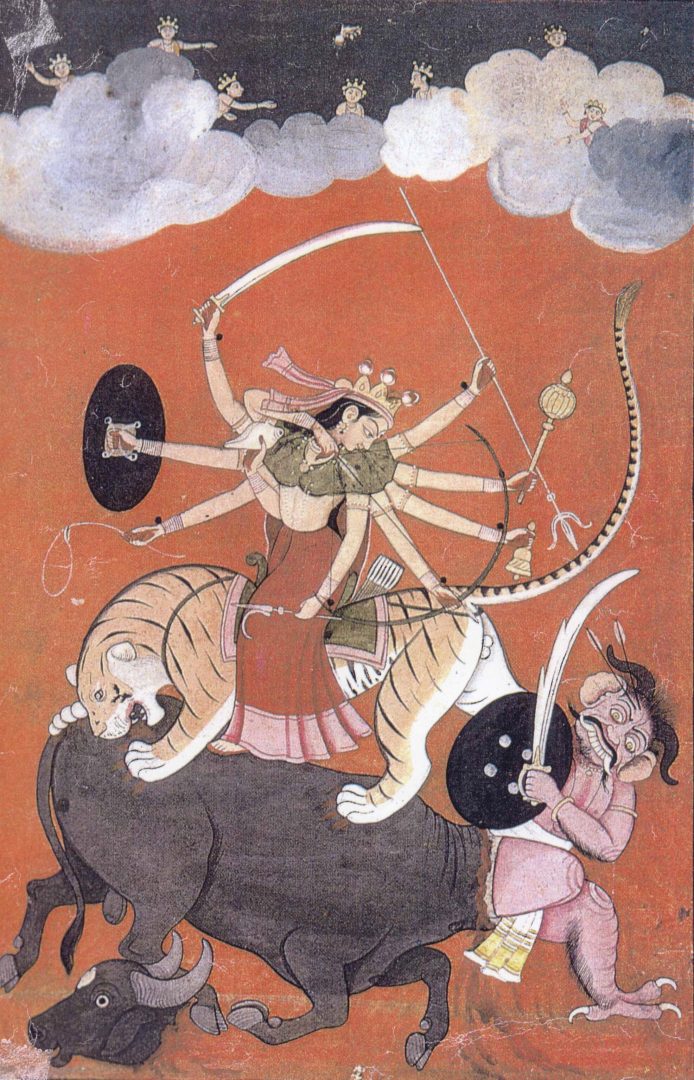Durga, the 10-armed goddess, represents the essence of femininity and highlights the battle of good over evil.
The deities of the universe and the Earth’s elements are found in Durga, more commonly known as the warrior goddess, who represents the embodiment of the combined powers.
 The female trinity’s strength made up of the combined forces of Saraswati, Paravati and Laxshmi were released into Durga for her to carry out her purpose, which according to legend was to fight a demon that had been terrorizing the heavens and earth. She is seen usually riding a lion or a tiger and each of her hands is holding different and powerful weapons or symbolic objects such as a trident, discus, shield, thunderbolt and so forth that were given to her by each deity.
The female trinity’s strength made up of the combined forces of Saraswati, Paravati and Laxshmi were released into Durga for her to carry out her purpose, which according to legend was to fight a demon that had been terrorizing the heavens and earth. She is seen usually riding a lion or a tiger and each of her hands is holding different and powerful weapons or symbolic objects such as a trident, discus, shield, thunderbolt and so forth that were given to her by each deity.
Different Hindu sects revere Durga for various reasons. Some believe that she is the mother of Ganesh and others worship her for being the goddess of strength and creativity.
Meaning of Durga from Sanskrit
The meaning of Durga from Sanskrit is believed through broad translation to mean invincible’ or the inaccessible’.
The significance of the goddess, who was beautifully formed once the deities had combined to create her demon destroying force, is representative of an individual’s battles against his or her own demons. During the Ramayana Ram, he is believed to have prayed to Durga during his battle to overthrow the evil King of Lanka and free his wife Sita, who had been captured and imprisoned by King Ravana.
What the Symbolic story of Durga Teaches?
The symbolic story of Durga teaches Hindus that only a combined and a wholesome approach that brings together and draws on the powers of the physical, spiritual, mental and the natural elements of being, can then only allow for any human being to fight his or her demons.
Durga puja, or prayers and worship, is usually around autumn and this consists of nine days of devotion to the nine forms of Durga. She also has 108 names that elucidate depth of nature and significant characteristics that Hindus are encouraged to look up to and to try and find within them such as; Jaya (victorious), Dhruti (valiant) or Daya (compassion).
Durga, also often referred to as the Earth mother, represents the wholeness of womanhood and the significance of female unity, power and strength in Hindu tradition.






